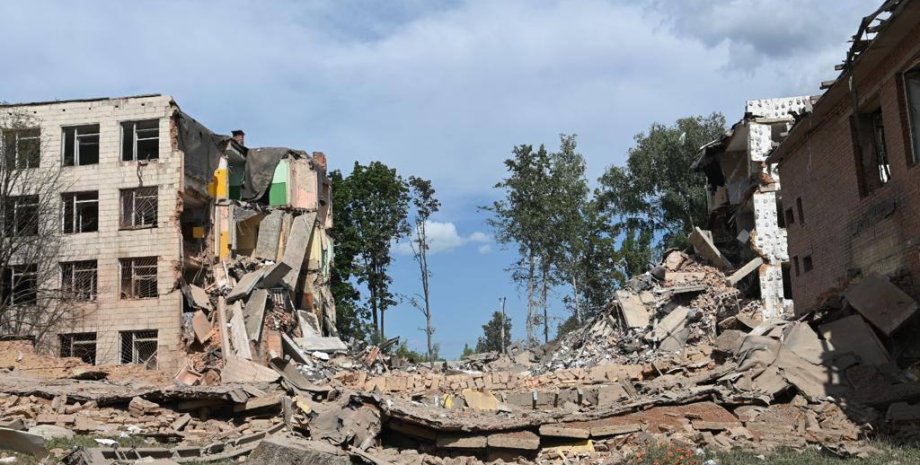
 By Natali Moss
By Natali Moss
The Armed Forces of the Russian Federation are increasingly beating Ukrainian intelligence drones, such as "Stork", "Gore", "Shark" and Flyeye. This practice was started by the Russian Center "Rubicon", said Beskrestnov specialist Sergei "Flash". "It was inevitable - we have long shown them how effective this path is. But, unfortunately, for almost a year, we have not developed or implemented effective countermeasures against anti -aircraft drones," he said.
According to him, there are little methods of counteracting: Reb against the channel of the control of the anti -aircraft drones is ineffective, the "Mirkaltz" system against the video channel loses effectiveness due to the transition of the enemy to digital transmission, and "evasion" on drones helps only in 70% of cases. The most effective is the detection and destruction of enemy 3D-rls.
Previously, in the Russian Federation there were no compact 3D radars, now there are probably Chinese models that need to be actively detected on the front. In addition, the Russian Federation increases the production of its own drones in response to Ukrainian anti -aircraft drones equipped with rockets: the higher the interception, the more launches.
The Deputy Director General of the Eelectronic Wrestling Company and Aviation Expert Anatoly Khrapchynsky noted that the Russians probably use compact radar stations (radar) operating in meter or decimeter ranges to identify Ukrainian small drones. "Such ranges are better suited for identifying inconspicuous, low-speed and insignificant objects such as reconnaissance drones. For example, Russians probably use small RLS of Chinese production.
They also have their development, such as Soviet" Credo M1 "or 1l11m. to coordinate the actions of air defense, including anti -aircraft drones for interception, " - emphasized Focus an aviation expert. According to him, in the forces of defense of Ukraine and the army of the Russian Federation, in modern conditions of hostilities, when small drones are widely used, the key problem is their timely detection.
This task is complicated because of the features of the following goals: their small size, low speed and low visibility for traditional surveillance means. "Detection of drones, possible by several principles. The first is the use of radio electronic intelligence agents that analyze the channels of information exchange, video signals or telemetry of drones.
The second approach is based on classic radar systems, when the signal is radiated, reflected from the object and the exceptional, which is given to the reception, allowing the reception. Increases the efficiency of detection, "Khrapchinsky added. Concerning the counteraction of hostile radar, Khrapchinsky notes that the main method is the use of radio electronic struggle. Such systems create obstacles in the ranges in which the radar operate, in fact "blinding" them.
The principle of operation remains classic: by creating noise in the appropriate frequency range of radar loses the ability to clearly identify goals. This applies to both large stations designed to detect aircraft or rockets and small radars used against drones. For example, creating obstacles in a meter or decimeter range, you can effectively neutralize the enemy radar. It is important that small RLS, which actively radiate signals, are vulnerable to detection of radio electronic intelligence.
Since they work in active radar mode, their radiation can be fixed and then used james (interference devices) to suppress. Thus, the Reb not only neutralizes the radar, but also helps to identify their location. Concerning its own developments, Khrapchinsky says, Ukraine is actively using modern technologies, including Israeli radar, adapted to identify small air goals.
However, according to the expert, the number of such systems must be significantly increased to provide reliable protection against drones. The development of compact radiations and the means of the IP is critical for increasing defense in the modern war. "The problem of creating effective low -size radar is not new, but it remains relevant.
In modern conditions, technologies are rapidly evolving, and in the future, it is likely that heavy equipment, such as tanks or armored personnel carriers, will be equipped Early stages and timely react to the threat, eliminating the need for additional protective structures such as "brazier" (metal grilles against drones).
As a result, according to Khrapchynsky, effective counteraction to small drones requires a comprehensive approach: a combination of advanced radar, radio electronic intelligence and fighting, as well as the integration of these technologies into different types of technology. This will not only identify and destroy hostile drones, but also create obstacles to enemy systems, providing an advantage on the battlefield.










All rights reserved IN-Ukraine.info - 2022